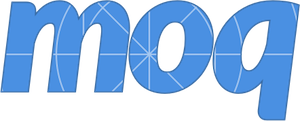matryer / Moq
Projects that are alternatives of or similar to Moq
Interface mocking tool for go generate.
What is Moq?
Moq is a tool that generates a struct from any interface. The struct can be used in test code as a mock of the interface.
above: Moq generates the code on the right.
You can read more in the Meet Moq blog post.
Installing
To start using Moq, just run go get:
$ go get github.com/matryer/moq
Usage
moq [flags] source-dir interface [interface2 [interface3 [...]]]
-fmt string
go pretty-printer: gofmt, goimports or noop (default gofmt)
-out string
output file (default stdout)
-pkg string
package name (default will infer)
-stub
return zero values when no mock implementation is provided, do not panic
-skip-ensure
suppress mock implementation check, avoid import cycle if mocks
generated outside of the tested package
Specifying an alias for the mock is also supported with the format 'interface:alias'
Example: moq -pkg different . MyInterface:MyMock
NOTE: source-dir is the directory where the source code (definition) of the target interface is located.
It needs to be a path to a directory and not the import statement for a Go package.
In a command line:
$ moq -out mocks_test.go . MyInterface
In code (for go generate):
package my
//go:generate moq -out myinterface_moq_test.go . MyInterface
type MyInterface interface {
Method1() error
Method2(i int)
}
Then run go generate for your package.
How to use it
Mocking interfaces is a nice way to write unit tests where you can easily control the behaviour of the mocked object.
Moq creates a struct that has a function field for each method, which you can declare in your test code.
In this example, Moq generated the EmailSenderMock type:
func TestCompleteSignup(t *testing.T) {
var sentTo string
mockedEmailSender = &EmailSenderMock{
SendFunc: func(to, subject, body string) error {
sentTo = to
return nil
},
}
CompleteSignUp("[email protected]", mockedEmailSender)
callsToSend := len(mockedEmailSender.SendCalls())
if callsToSend != 1 {
t.Errorf("Send was called %d times", callsToSend)
}
if sentTo != "[email protected]" {
t.Errorf("unexpected recipient: %s", sentTo)
}
}
func CompleteSignUp(to string, sender EmailSender) {
// TODO: this
}
The mocked structure implements the interface, where each method calls the associated function field.
Tips
- Keep mocked logic inside the test that is using it
- Only mock the fields you need
- It will panic if a nil function gets called
- Name arguments in the interface for a better experience
- Use closured variables inside your test function to capture details about the calls to the methods
- Use
.MethodCalls()to track the calls - Use
go:generateto invoke themoqcommand - If Moq fails with a
go/formaterror, it indicates the generated code was not valid. You can run the same command with-fmt noopto print the generated source code without attempting to format it. This can aid in debugging the root cause.
License
The Moq project (and all code) is licensed under the MIT License.
Moq was created by Mat Ryer and David Hernandez, with ideas lovingly stolen from Ernesto Jimenez. Featuring a major refactor by @sudo-suhas, as well as lots of other contributors.
The Moq logo was created by Chris Ryer and is licensed under the Creative Commons Attribution 3.0 License.


